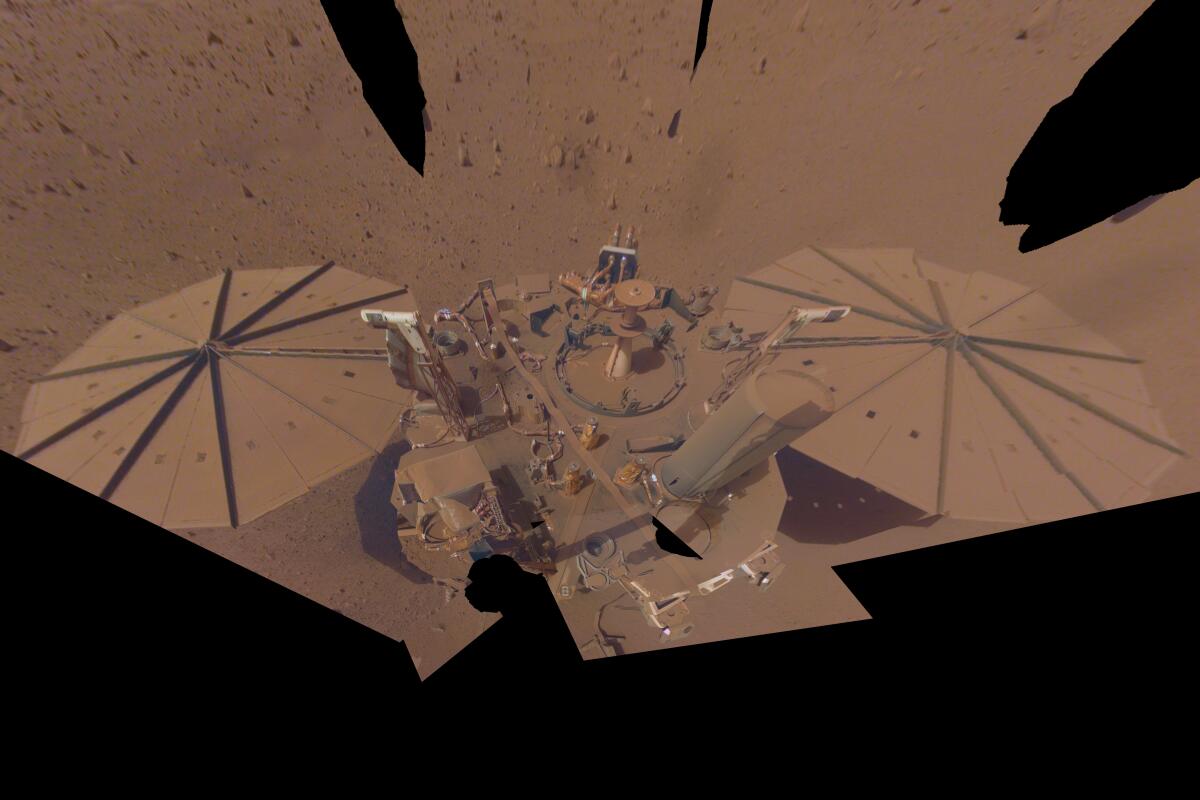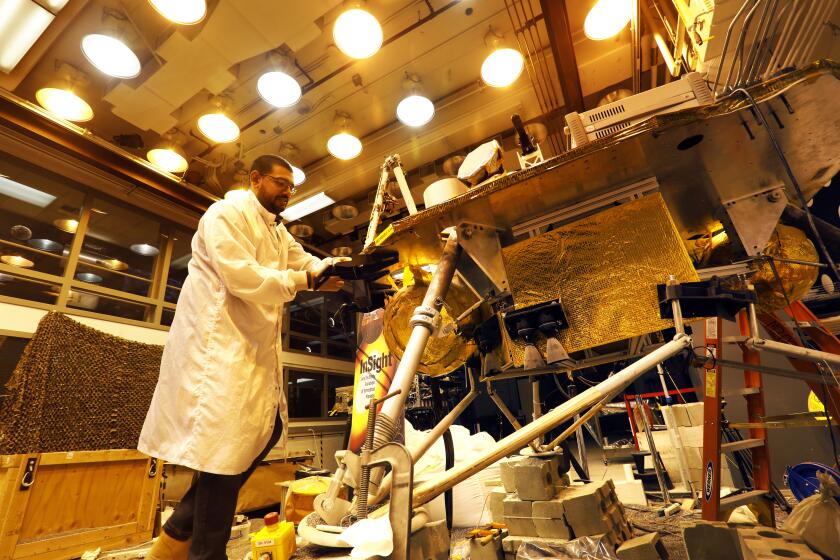An ocean’s worth of water may be hiding under Mars’ red dusty surface, study suggests

Mars may be drenched beneath its surface, with enough water hiding in the cracks of underground rocks to form a global ocean, new research suggests.
The findings released this week are based on seismic measurements from NASA’s Mars InSight lander, which detected more than 1,300 Mars quakes before shutting down two years ago.
This water — believed to be seven to 12 miles down in the Martian crust — most likely would have seeped from the surface billions of years ago when Mars harbored rivers, lakes and possibly oceans, according to the lead scientist, Vashan Wright of UC San Diego’s Scripps Institution of Oceanography.
Just because water still may be sloshing around inside Mars does not mean it holds life, Wright said.
“Instead, our findings mean that there are environments that could possibly be habitable,” he said in an email.
The days are numbered for NASA’s InSight lander on Mars. That also spells the end for ForeSight, its doppelganger at the Jet Propulsion Laboratory.
His team combined computer models with InSight readings including the quakes’ velocity in determining underground water was the most likely explanation.
The results appeared Monday in the Proceedings of the National Academy of Sciences.
If InSight’s location at Elysium Planitia near Mars’ equator is representative of the rest of the Red Planet, the underground water would be enough to fill a global ocean a mile or so deep, Wright said.
It would take drills and other equipment to confirm the presence of water and seek out any potential signs of microbial life.
Although the InSight lander is no longer working, scientists continue to analyze the data collected from 2018 through 2022, in search of more information about Mars’ interior.
Though wet over most of its surface more than 3 billion years ago, Mars is thought to have lost its surface water as its atmosphere thinned, turning the planet into the dry, dusty world known today.
Scientists theorize much of this ancient water escaped out into space or remained buried below.
Dunn writes for the Associated Press.
More to Read
Sign up for Essential California
The most important California stories and recommendations in your inbox every morning.
You may occasionally receive promotional content from the Los Angeles Times.






